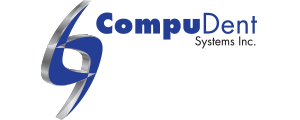Internet Access
In order to meet the full service needs of your practice Compudent through its alliance partners can offer a myriad of connectivity scenarios. From simple dial-up connectivity to dedicated digital lines we can create the package to suit your needs.
Dial-Up Access (Regular Phone Line & Modem)
Initially web access was granted through dial up connections, that occurred through traditional modem technology (SLIP) of which in its day were the norm and the industry standard. However, compared to the applications available today, traditional dial-up is somewhat outdated and very slow. The speed of the modem and the amount of bandwidth available on the line that was being used dictated the speed of receiving and transferring data.
Of course cost is always an issue and using dial up, as you pay a monthly fee for the number of hours you use per month. Thus, there is a limitation to the number of hours one can stay connected. Another drawback of the traditional dial-up is just that, one must dial-up each time they wish to use their email and or Internet and if connected and left idle most dial-up ISP’s will drop the connection.
However, the use of this tool is still very popular because it is cheap, you can dial up from anywhere and is good for low usage.
Remember that one of your phone lines will be tied up while you are connected to the Internet. Most practices add a dedicated line from Bell specifically for their Internet usage.
ISDN
A second way to connect is ISDN. (Integrated Services Digital Network) This is an all-digital communications network. Because ISDN most often uses existing copper wires, your home or office may not need to be rewired, but you will need a new wall jack. If you don’t already have ISDN, the Phone Company will install the jack when your service is connected. ISDN tends to be more stable and definitely faster than dial up connection. Timeouts do not occur that frequently and you are charged a flat rate monthly fee. The largest benefit comes from the speed of data transfer; it is up to 10 times faster than traditional dial-up.
Other technologies are continuing to evolve such as Cable access or ADSL (e.g. Bell Sympatico) which are currently available for residential use only, and in certain areas for commercial use. The costs however, are substantially higher than residential rates. For more information on this service and whether it is available in your service area, ask your Compudent Representative. Note: in the case of Dial-Up networking it is assumed that the client is providing for the installation of the phone line to be used through their local service provider.
DSL & ADSL
A third way of connecting to the Internet is to use DSL (Digital for downloading Subscriber Line). Like ISDN the user is connected through all the time, yet with DSL the user has a dedicated digital line at speeds faster than that of ISDN. This type of service gives you much faster access to the Internet than regular modems and its biggest benefit is the ability to transfer large amounts of information at high speeds.
ADSL (Asymmetric Digital Subscriber Line) is currently our most popular choice for high-bandwidth installations. The cost for these connections is very reasonable, and the speed is much faster than a regular dial-up connection. If ADSL is available in your location (your CompuDent Representative can tell you whether it is or not) this is currently your best option.
Remember: ADSL connections do not require you to dedicate a phone line to the Internet. You can use the same line for regular phone conversations and Internet communication at the same time without interference.
Cable Access
Cable modems send and receive over the same coaxial cable network that you use to receive cable TV signals. The maximum available speed of a cable connection is VERY good, and this is a popular option for many home users.
Cable access is currently not available in many business locations, but if it is available in yours it may be a good choice. Your Compudent representative can check for availability.
The biggest current problem with cable access is the network traffic due to other users of the cable network. The current network topology does not support many simultaneous users well. Many cable users complain of VERY slow access during peak times.
New Technologies
Other technologies are continuing to evolve such as Satellite access (e.g. Bell ExpressVu™). Security hardware and software is evolving continuously as well. Please feel free to ask your Compudent Representative about any new technologies, or which options are available to you and your practice.


